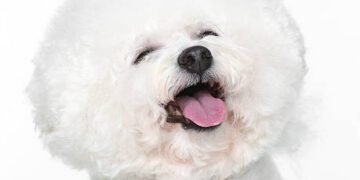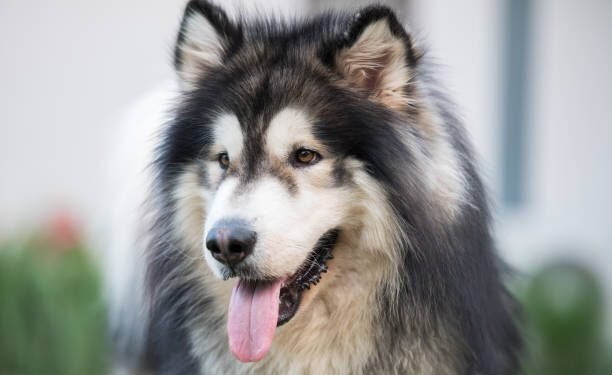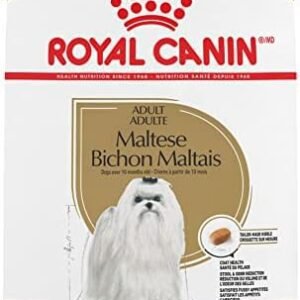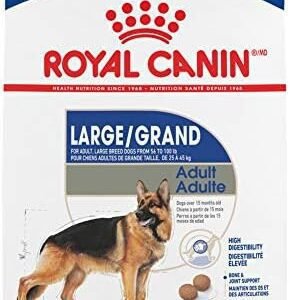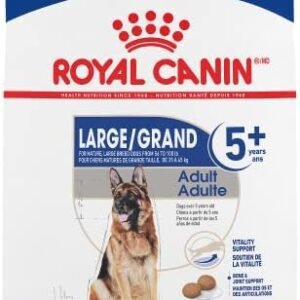The Alaskan Malamute, a majestic and powerful breed, has long been cherished for its remarkable qualities and unique characteristics. In this comprehensive guide, we’ll delve into the world of the Alaskan Malamute, exploring everything from their physical attributes to their temperament and care requirements.
Introduction
Did you know? The Alaskan Malamute is one of the oldest and most ancient dog breeds, tracing its lineage back thousands of years to the Inuit people of Alaska. They were initially bred for their incredible strength and stamina, making them ideal working dogs in harsh Arctic conditions.
Welcome to a detailed exploration of the Alaskan Malamute dog breed, a true symbol of endurance, loyalty, and companionship. As you embark on this journey, you’ll discover the ins and outs of this remarkable breed, providing you with valuable insights if you’re considering adding one to your family or simply want to learn more about these magnificent creatures.
In an age where information is readily available, it’s essential to have a reliable and up-to-date source that covers the breed comprehensively. This guide aims to fill that void, offering you a wealth of information about Alaskan Malamutes, including their physical characteristics, temperament, care needs, and more.
Let’s begin by breaking down some key facts about the Alaskan Malamute in the form of a table:
| Field | Information |
|---|---|
| Height | 23 to 25 inches (male), 21 to 23 inches (female) |
| Weight | 75 to 85 pounds (male), 65 to 75 pounds (female) |
| Life Span | 10 to 14 years |
| Good with | Families, children, experienced dog owners |
| Temperament | Affectionate, loyal, strong-willed |
| Intelligence | High |
| Shedding Amount | Seasonal heavy shedding |
| Grooming | Regular brushing, occasional bathing |
| Exercise Needs | High, daily exercise required |
| Energy Level | Very high |
| Barking Level | Low to moderate |
| Drool Amount | Low |
| Coat Length/Texture | Double coat, dense, coarse |
| Colors | Various shades of gray and white |
| Patterns | Often with a cap on the head |
This table provides an overview of the Alaskan Malamute’s physical attributes and some behavioral traits. However, let’s delve deeper into each of these aspects to gain a more profound understanding of this remarkable breed. In the following sections, we’ll explore their history, appearance, temperament, exercise needs, grooming requirements, and more. So, let’s embark on this journey to uncover the fascinating world of the Alaskan Malamute!
Table of Contents
2. Breed History and Origin
Exploring Their Roots
To truly appreciate the Alaskan Malamute breed, it’s essential to delve into its rich history and understand the fascinating journey that has shaped these remarkable dogs.

Historical Development
The Alaskan Malamute’s history can be traced back thousands of years to the indigenous Inuit people of Alaska’s harsh Arctic regions. These dogs were not just pets; they were integral to the Inuit’s survival. The Inuit used Alaskan Malamutes for various tasks, from hunting seals to hauling heavy loads across treacherous terrains.
The breed’s ancestors were initially brought to North America by early settlers, where they interbred with native Arctic dogs. Over time, a unique and powerful working dog emerged, known today as the Alaskan Malamute. These dogs were selectively bred for their strength, endurance, and ability to withstand frigid temperatures, resulting in a breed ideally suited for the Arctic’s challenging environment.
Notable Traits
What sets the Alaskan Malamute apart from other breeds is its sheer strength and robust build. They are one of the largest and most powerful of all sled dog breeds. Some of their notable traits include:
- Physical Strength: Alaskan Malamutes are renowned for their incredible physical strength, enabling them to pull heavy sleds and equipment through snow and ice. Their strong shoulders and muscular bodies make them exceptional working dogs.
- Endurance: These dogs possess remarkable stamina, capable of covering long distances in harsh conditions without tiring quickly. This trait made them indispensable for arduous Arctic expeditions.
- Affectionate Nature: Despite their imposing size and strength, Alaskan Malamutes are known for their affectionate and friendly nature. They form strong bonds with their human companions and are often referred to as “gentle giants.”
Relevance of Origin
The origin of the Alaskan Malamute plays a crucial role in understanding their characteristics and temperament today. The breed’s history as a working dog in extreme conditions has left an indelible mark on their DNA. Here’s how the breed’s origin continues to influence their traits:
- Strong Work Ethic: Alaskan Malamutes have an inherent work ethic ingrained in their genes. They thrive when engaged in physically demanding activities, making them excellent companions for active individuals and families.
- Cold-Weather Adaptation: Their history in the Arctic has equipped them with a thick, double coat that provides insulation against extreme cold. This adaptation makes them well-suited for cold climates but requires special care in warmer regions.
- Loyalty and Companionship: The Alaskan Malamute’s history as a working companion to the Inuit people has fostered their loyalty and desire for human companionship. They tend to form strong bonds with their owners and thrive in a family environment.
Understanding the breed’s history and origin provides valuable insights into the Alaskan Malamute’s unique characteristics and helps prospective owners appreciate the heritage of these magnificent dogs. In the next sections, we’ll explore their physical appearance, temperament, and care requirements in more detail, offering a comprehensive guide for anyone considering bringing an Alaskan Malamute into their life.
3. Understanding the Alaskan Malamute Breed’s Traits
Physical Characteristics
The Alaskan Malamute is a breed of dog that exudes strength and presence. Understanding their physical attributes is essential for anyone considering bringing one into their home.
Size: Alaskan Malamutes are a large breed, with males typically standing between 23 to 25 inches at the shoulder and females slightly shorter at 21 to 23 inches. In terms of weight, males usually range from 75 to 85 pounds, while females are slightly smaller, weighing in at 65 to 75 pounds.
Coat Type: The Alaskan Malamute boasts a dense double coat that provides insulation against cold temperatures. The outer coat is coarse, while the undercoat is soft and thick. This combination allows them to thrive in frigid climates but can pose challenges in warmer areas.
Color: These dogs come in various shades of gray and white, with some also displaying touches of black. Their striking facial mask, a hallmark of the breed, often covers the face.
Distinguishing Features: Alaskan Malamutes are known for their strong, well-muscled bodies, broad heads, and erect ears. Their eyes are almond-shaped and convey an expressive, friendly demeanor. They have a plume-like tail that is carried over their back.
Temperament Overview
Understanding the Alaskan Malamute’s temperament is crucial, as it plays a significant role in determining their suitability as family pets and their compatibility with children and other animals.
Affectionate and Loyal: Alaskan Malamutes are renowned for their affectionate nature and strong loyalty to their human companions. They often form deep bonds with their families and are known as “gentle giants.”
Independent Thinkers: While they are intelligent, Alaskan Malamutes can also be independent thinkers. This means that they may not always follow commands blindly and may require patient and consistent training.
Compatibility with Children: Alaskan Malamutes can be great with children when properly socialized from a young age. Their friendly disposition and protective instincts often make them wonderful family pets. However, due to their size and strength, supervision is crucial when they interact with small children.
Compatibility with Other Pets: When introduced and socialized correctly, Alaskan Malamutes can get along well with other dogs and pets in the household. However, their strong prey drive, stemming from their history as sled dogs, may make them less suitable for homes with small animals like rodents or birds.
Environment Needs
To ensure that an Alaskan Malamute thrives in your home environment, consider the following factors:
Space: These dogs are large and active, so they require ample space to move around. A spacious yard is ideal for them to play and exercise. Apartment living can be challenging unless you commit to providing them with daily exercise and mental stimulation.
Temperature: Alaskan Malamutes are well-suited to cold climates, thanks to their double coat. In warmer regions, they may struggle with heat, so it’s essential to provide them with shade and access to fresh water during hot weather.
Exercise Requirements: Alaskan Malamutes have high energy levels and require daily exercise. Long walks, runs, and playtime are essential to keep them physically and mentally stimulated. Failure to meet their exercise needs can lead to boredom and undesirable behaviors.
Training and Socialization
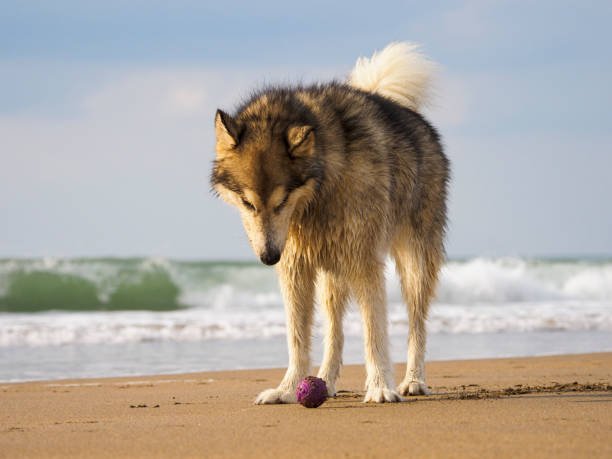
Training and socialization are critical aspects of owning an Alaskan Malamute. Here’s what you need to know:
Trainability: Alaskan Malamutes are intelligent but can be independent. Early and consistent training is essential to ensure they understand commands and follow them reliably. Positive reinforcement techniques work well with this breed.
Socialization: Proper socialization from a young age is crucial. It helps them become well-adjusted, confident dogs that can interact positively with people and other animals. Expose them to various experiences, environments, and individuals to build their confidence and reduce the likelihood of fear-based aggression.
In summary, understanding the physical characteristics, temperament, environmental needs, and training requirements of the Alaskan Malamute is vital before bringing one into your home. When provided with the right environment, training, and socialization, these magnificent dogs can make loving and loyal companions for families who appreciate their unique traits and are prepared to meet their needs.
4. Health Considerations and Care
Ensuring the health and well-being of your Alaskan Malamute is of paramount importance. In this section, we’ll explore common health issues, lifespan and longevity, dietary needs, exercise requirements, and grooming practices to keep your beloved pet in optimal condition.
Common Health Issues
While Alaskan Malamutes are generally robust dogs, they can be prone to certain health issues. Being aware of these conditions and proactively addressing them is essential for maintaining your pet’s health:
1. Hip Dysplasia: This hereditary condition can affect Alaskan Malamutes, leading to hip joint problems. Regular veterinary check-ups and controlled exercise can help manage this issue.
2. Bloat: Alaskan Malamutes are deep-chested dogs, making them susceptible to bloat (gastric torsion). Feeding them smaller, more frequent meals and avoiding exercise immediately after eating can reduce the risk.
3. Hypothyroidism: Some Alaskan Malamutes may develop hypothyroidism, a condition where the thyroid gland doesn’t produce enough hormones. Symptoms include weight gain, lethargy, and hair loss. Medication can manage this condition effectively.
4. Progressive Retinal Atrophy (PRA): PRA is a genetic eye disorder that can lead to vision loss. Regular eye exams can detect this condition early, allowing for proactive management.
5. Chondrodysplasia: This condition affects the development of the dog’s cartilage and can result in dwarfism. Responsible breeding practices can help reduce the risk.
6. Osteochondritis Dissecans (OCD): OCD is a joint disorder that affects growing dogs. Providing appropriate nutrition and monitoring growth can help prevent this condition.
7. Obesity: Alaskan Malamutes love to eat, and without portion control and regular exercise, they can become overweight. Obesity can exacerbate other health issues and reduce their quality of life.
Lifespan and Longevity
The average lifespan of an Alaskan Malamute typically ranges from 10 to 14 years. To promote a longer and healthier life for your furry friend, consider the following tips:
1. Regular Veterinary Check-ups: Schedule routine check-ups with your veterinarian to catch and address health issues early.
2. Proper Nutrition: Feed your Alaskan Malamute a balanced and high-quality diet suitable for their age and activity level. Consult your vet for specific dietary recommendations.
3. Weight Management: Maintain a healthy weight through portion control and regular exercise to prevent obesity and related health problems.
4. Exercise and Mental Stimulation: Ensure your Malamute gets ample exercise and mental stimulation to prevent boredom and promote physical fitness.
5. Dental Care: Dental health is vital. Brush your dog’s teeth regularly and provide dental chews ortoys to reduce the risk of dental problems.
6. Parasite Control: Keep up with flea, tick, and heartworm prevention, as well as regular deworming.
7. Spaying and Neutering: Consider spaying or neutering your Malamute to prevent certain health issues and unwanted pregnancies.
Diet and Nutrition
A well-balanced diet is essential to keep your Alaskan Malamute healthy and happy. Consider the following dietary guidelines:
1. High-Quality Dog Food: Choose a premium dog food that lists meat as the primary ingredient. Look for options tailored to large breeds or active dogs.
2. Portion Control: Measure your dog’s food to prevent overeating and obesity. Follow the recommended portion sizes on the food packaging or consult your veterinarian for guidance.
3. Feeding Schedule: Establish a regular feeding schedule. Most adult Malamutes do well with two meals per day.
4. Fresh Water: Ensure access to fresh, clean water at all times.
5. Avoid Harmful Foods: Some human foods can be toxic to dogs, including chocolate, grapes, onions, and garlic. Keep these items out of your Malamute’s reach.
Exercise and Activity
Alaskan Malamutes are energetic dogs with high exercise needs. Providing them with adequate physical and mental stimulation is crucial for their well-being:
1. Daily Exercise: Aim for at least 60 to 90 minutes of exercise daily, including walks, runs, and playtime.
2. Mental Stimulation: Engage your Malamute’s mind with puzzle toys, obedience training, and interactive games.
3. Outdoor Activities: Malamutes thrive in colder climates and love activities like hiking and pulling sleds or carts.
4. Socialization: Expose your Malamute to different people, dogs, and environments from a young age to ensure they are well-adjusted and confident.
Grooming and Maintenance
Proper grooming practices are essential to keep your Alaskan Malamute’s coat healthy and reduce shedding:
1. Brushing: Brush your Malamute’s coat at least once a week, especially during shedding seasons, to remove loose hair and prevent matting.
2. Bathing: Bathe your Malamute as needed, typically every two to three months. Over-bathing can strip their coat of natural oils.
3. Ear and Eye Cleaning: Regularly clean their ears and eyes to prevent infections and maintain hygiene.
4. Dental Care: Brush your dog’s teeth regularly and provide dental chews or treats to prevent tartar buildup.
5. Shedding: Be prepared for heavy shedding, especially during seasonal changes. A good brush and a high-quality vacuum cleaner are essential.
In conclusion, the health and care of your Alaskan Malamute require dedication and attention to their unique needs. By staying proactive in addressing potential health issues, providing a balanced diet, ensuring ample exercise and mental stimulation, and practicing proper grooming, you can enjoy a long and fulfilling companionship with this majestic breed. Remember that regular veterinary care and responsible ownership are key to your Alaskan Malamute’s well-being.
5. Choosing and Adopting an Alaskan Malamute Dog Breed
Adopting an Alaskan Malamute can be a rewarding experience, but it’s essential to make an informed decision and ensure you’re prepared for the responsibilities of caring for this magnificent breed. In this section, we’ll explore the reasons for adoption, research and preparation, the adoption process, and ethical considerations for those interested in bringing an Alaskan Malamute into their family.
Reasons for Adoption
Adopting an Alaskan Malamute breed offers several benefits, not only for the dog but also for the adopter and society as a whole. Here are some compelling reasons to consider adoption:
1. Save a Life: By adopting a Malamute from a shelter or rescue organization, you provide a loving home to a dog in need, potentially saving them from euthanasia.
2. Second Chances: Many rescue Malamutes come from challenging backgrounds or have experienced neglect or abuse. Adoption gives them a second chance at a happy and fulfilling life.
3. Breed Expertise: Rescue organizations often have a wealth of knowledge about the breed, allowing you to make an informed decision and receive guidance on care and training.
4. Health Benefits: Adopting from reputable rescues typically includes spaying/neutering, vaccinations, and sometimes even microchipping, saving you on initial veterinary costs.
5. Reduce Overpopulation: By adopting, you help reduce the demand for puppies from puppy mills and backyard breeders, which contribute to the overpopulation of dogs.
6. Companionship: Alaskan Malamutes are known for their loyalty and affection. By adopting one, you gain a devoted companion who will bring joy to your life.
Research and Preparation
Before adopting an Alaskan Malamute, thorough research and preparation are essential to ensure a smooth transition for both you and your new furry friend. Here are some steps to consider:
1. Breed-Specific Needs: Understand the specific needs and characteristics of the Alaskan Malamute breed. They require ample exercise, a cool climate, and a loving, active family.
2. Financial Responsibilities: Be prepared for the financial commitments associated with dog ownership. This includes food, grooming, veterinary care, and potential emergency expenses.
3. Training and Socialization: Familiarize yourself with training and socialization requirements. Malamutes can be strong-willed, so positive reinforcement training is often recommended.
4. Space: Ensure you have enough space for this large breed to move around comfortably, both indoors and in a securely fenced outdoor area.
5. Time Commitment: Consider your daily schedule and how it aligns with the breed’s exercise and companionship needs. Malamutes thrive on interaction with their families.
6. Allergies: Verify that no one in your household is allergic to dogs, especially breeds with dense double coats like the Alaskan Malamute.
Adoption Process
Adopting an Alaskan Malamute involves a structured process to ensure both the dog and the adopter are a good match. The steps may vary slightly depending on the rescue organization, but here’s a general overview:
1. Research Rescues: Start by researching and contacting reputable Alaskan Malamute rescues or breed-specific organizations in your area or region.
2. Application: Complete an adoption application provided by the rescue organization. This application typically asks about your living situation, experience with dogs, and your reasons for wanting to adopt.
3. Home Visit: Some organizations may conduct a home visit to assess your living conditions and ensure they are suitable for an Alaskan Malamute.
4. Interview: Expect to have a conversation or interview with a representative from the rescue organization. They may ask additional questions about your lifestyle and experience with dogs.
5. Adoption Fee: Most rescues charge an adoption fee, which helps cover the cost of vaccinations, spaying/neutering, and other initial veterinary care. The fee varies but is typically a fraction of what you’d pay for a puppy from a breeder.
6. Adoption Agreement: Review and sign an adoption agreement outlining your responsibilities as an owner and the rescue organization’s expectations.
7. Bringing Your Malamute Home: Once approved, you can bring your new furry family member home! Be patient during the adjustment period as your Malamute settles into their new environment.
Breeding and Ethical Considerations
While adoption is a wonderful way to provide a loving home to an Alaskan Malamute, it’s essential to discuss responsible breeding practices and ethical considerations:
1. Responsible Breeders: If you decide to purchase an Alaskan Malamute from a breeder, choose one who adheres to responsible breeding practices. Responsible breeders prioritize the health and well-being of the dogs and ensure proper health screening and genetic diversity.
2. Health Screening: Reputable breeders conduct health screenings for common breed-specific issues, such as hip dysplasia, eye problems, and hypothyroidism, to minimize the risk of hereditary diseases.
3. Avoid Backyard Breeders: Avoid purchasing puppies from backyard breeders or puppy mills, as these operations often prioritize profit over the welfare of the dogs.
4. Adoption as an Option: Always consider adoption as an option before purchasing a dog. Many wonderful Alaskan Malamutes are in need of loving homes, and adoption can be a rewarding experience.
In conclusion, choosing and adopting an Alaskan Malamute breed involves careful consideration, research, and preparation. Whether you decide to adopt a rescue dog or purchase a puppy from a responsible breeder, the well-being of the dog should be the top priority. By making informed choices and providing a loving and caring home, you can enjoy a fulfilling companionship with this remarkable breed while contributing to the welfare of dogs in need.
6. Popularity and Recognition
Understanding the popularity and recognition of the Alaskan Malamute breed is essential for anyone interested in bringing one into their home. In this section, we’ll explore the current popularity of Alaskan Malamutes, their recognition by kennel clubs and breed organizations, and any notable breed varieties within the Alaskan Malamute breed.
Current Popularity
Alaskan Malamutes are known for their striking appearance, exceptional strength, and gentle temperament, which have contributed to their popularity as family pets and working dogs. However, it’s important to note that popularity can vary by region and over time. Here’s an overview of the breed’s current popularity:
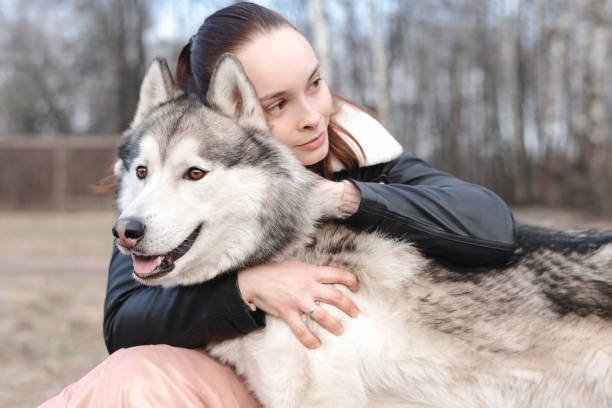
1. Family-Friendly Dogs: Alaskan Malamutes have gained popularity as family pets due to their friendly nature and affectionate disposition, especially when raised with children.
2. Outdoor Enthusiasts: Their reputation as excellent outdoor companions for activities like hiking and sledding has made them popular among outdoor enthusiasts.
3. Regional Variations: Popularity can vary by region. In colder climates, where the breed’s cold-weather tolerance is appreciated, Alaskan Malamutes may be more common.
4. Adoption Trends: The trend of adopting rescue dogs has also contributed to the breed’s popularity, as more people discover the benefits of adopting Alaskan Malamutes in need of loving homes.
5. Social Media Influence: The breed’s striking appearance and charming personality have made them stars on social media platforms, contributing to increased interest in the breed.
6. Responsible Ownership: Many Alaskan Malamute owners are dedicated to responsible ownership, which includes proper care, training, and socialization, helping maintain the breed’s positive reputation.
Breed Recognition
Alaskan Malamutes have gained recognition from various kennel clubs and breed organizations, underscoring their significance as a distinct and well-regarded breed. Here are some notable organizations that officially recognize the Alaskan Malamute:
1. American Kennel Club (AKC): The AKC, one of the most prominent kennel clubs in the United States, officially recognizes the Alaskan Malamute as a breed. They are categorized within the “Working Group” due to their history as working dogs.
2. The Kennel Club (UK): In the United Kingdom, The Kennel Club recognizes the Alaskan Malamute as a breed within the “Working Group.” They also provide breed standards to maintain the breed’s integrity.
3. Canadian Kennel Club (CKC): The CKC recognizes the Alaskan Malamute as a breed and provides breed standards for Canadian breeders and enthusiasts.
4. Fédération Cynologique Internationale (FCI): The FCI, an international canine organization, also officially recognizes the Alaskan Malamute as a distinct breed.
5. Other National Kennel Clubs: Alaskan Malamutes are recognized by various national kennel clubs worldwide, reflecting their global presence and popularity.
Notable Breed Varieties
Unlike some other breeds, the Alaskan Malamute does not have distinct varieties or subtypes recognized by kennel clubs. However, within the breed, there can be variations in coat color and markings. Here are some common coat varieties you might encounter:
- Gray and White: The most common coat color is various shades of gray with white markings, including the characteristic facial mask.
- Black and White: Some Alaskan Malamutes have black and white coats with striking contrast.
- Red and White: This variety features shades of red and white, giving the dog a unique appearance.
- Sable and White: Sable Alaskan Malamutes have a mix of colors that can resemble a wolf’s coat, with various shades of gray and red.
- Seal and White: Seal-colored Malamutes have dark brownish-black coats with white markings.
It’s important to note that while these coat color variations exist, they do not represent distinct breed varieties. Alaskan Malamutes should conform to breed standards in terms of size, structure, and temperament, regardless of their coat color.
In conclusion, the Alaskan Malamute breed remains popular among dog enthusiasts and families alike due to their endearing qualities. They are recognized by major kennel clubs and organizations, which underscores their significance as a unique and well-regarded breed. While they may exhibit various coat color variations, these do not represent separate breed varieties, but rather the breed’s natural diversity within its recognized standards. Whether you’re interested in adopting or purchasing an Alaskan Malamute, understanding their current popularity and recognition is key to making an informed decision.
7. Exercise and Activity Recommendations
Ensuring your Alaskan Malamute gets the right amount and type of exercise is crucial for their physical and mental well-being. In this section, we’ll provide a detailed exercise plan, address any breed-specific exercise needs, and offer guidance on maintaining your Malamute’s health through nutrition and feeding guidelines.
Exercise Plan
Alaskan Malamutes are an active and strong breed with high exercise needs. Failing to meet these needs can lead to boredom, obesity, and undesirable behavior. Here’s a comprehensive exercise plan for your Malamute:
1. Daily Walks: Provide your Malamute with at least one long daily walk, lasting between 45 minutes to an hour. These walks should be brisk and provide mental stimulation through exposure to different environments and experiences.
2. Playtime: Engage in active play sessions with your Malamute to burn off excess energy. Games like fetch, tug-of-war, and hide-and-seek can be enjoyable for both you and your dog.
3. Running and Jogging: If you’re a runner, consider taking your Malamute along for your jogs or runs. They can make excellent running partners and will appreciate the extra exercise.
4. Hiking: Malamutes excel at hiking due to their endurance and love for the outdoors. Plan regular hiking trips, especially in natural settings where they can explore and engage their senses.
5. Agility Training: Enroll your Malamute in agility training classes. This not only provides physical exercise but also stimulates their minds and enhances their obedience.
6. Sled Pulling: If you live in an area with snow or have access to a dog sled, consider engaging your Malamute in sled pulling. This activity aligns with their historical purpose and can be incredibly fulfilling for them.
7. Socialization: Regularly expose your Malamute to different people, dogs, and environments to ensure they are well-socialized. This helps prevent fear-based aggression and promotes healthy interactions.
8. Mental Stimulation: Alaskan Malamutes are intelligent dogs that thrive on mental challenges. Use puzzle toys, obedience training, and interactive games to keep their minds engaged.
9. Swimming: While not all Malamutes are natural swimmers, many enjoy the water. If your dog shows an interest in swimming, provide opportunities for them to do so safely. Swimming is an excellent low-impact exercise.
10. Rest Days: Just like humans, dogs need rest days to recover. Ensure your Malamute has days when exercise is lighter or more relaxed to prevent overexertion.
Breed-Specific Exercise Needs
Alaskan Malamutes have some breed-specific exercise needs and considerations:
1. Cold Weather Preference: Malamutes are built for cold weather, and they often enjoy exercise in cooler temperatures. However, in extreme cold, take precautions to prevent frostbite, especially on their sensitive ear tips.
2. Avoid Overexertion: While Malamutes have high endurance, avoid pushing them too hard, especially in hot weather. These dogs can overheat quickly, so provide plenty of water and shade during warm months.
3. Leash Training: Due to their strong prey drive, Malamutes can be prone to pulling on the leash. Invest time in leash training to ensure they walk calmly and safely with you.
4. Monitor for Signs of Fatigue: Be vigilant for signs of fatigue during exercise, such as excessive panting, slowing down, or disinterest in play. These signs indicate it’s time to rest.
Nutrition and Feeding Guidelines
Proper nutrition is vital to keep your Alaskan Malamute healthy and maintain their ideal weight. Here are some dietary recommendations:
1. High-Quality Dog Food: Choose a premium dog food that lists meat as the primary ingredient. Look for options designed for large or active breeds.
2. Portion Control: Measure your dog’s food to prevent overeating and obesity. Follow the recommended portion sizes on the food packaging or consult your veterinarian for guidance based on your Malamute’s age, weight, and activity level.
3. Feeding Schedule: Establish a regular feeding schedule with set mealtimes. Most adult Malamutes do well with two meals per day, but consult with your vet for specific recommendations.
4. Avoid Harmful Foods: Some human foods can be toxic to dogs, including chocolate, grapes, onions, and garlic. Keep these items out of your Malamute’s reach.
5. Dietary Restrictions: Be aware of any dietary restrictions or allergies that may be common in the breed. Consult your veterinarian if you suspect your Malamute has food sensitivities.
6. Fresh Water: Ensure your Malamute has access to fresh, clean water at all times, especially after exercise.
7. Treats and Snacks: Use treats sparingly and choose healthy, low-calorie options for training and rewards.
8. Weight Monitoring: Regularly monitor your Malamute’s weight and adjust their diet as needed to maintain a healthy body condition.
9. Special Considerations: If you have a Malamute puppy, consult with your veterinarian for specific puppy food recommendations and feeding guidelines. Puppies have different dietary needs than adults.
In conclusion, providing your Alaskan Malamute with the right exercise and nutrition is essential for their overall health and well-being. This breed thrives on physical activity, mental stimulation, and a balanced diet. By following the exercise and feeding guidelines outlined here, you can help your Malamute maintain a healthy and active lifestyle, ensuring they live a long and fulfilling life as part of your family.
8. Socialization and Training Tips
Socialization and training are essential aspects of raising a well-adjusted Alaskan Malamute. This breed, known for its intelligence and strong-willed nature, requires specific training methods and socialization techniques to thrive as a family companion. In this section, we’ll provide breed-specific training tips and advice on socializing your Alaskan Malamute with other dogs and people.
Training Tips
Alaskan Malamutes are intelligent but can be independent and stubborn at times. Effective training is essential to ensure they understand their role in the family and behave appropriately. Here are some training tips tailored to the breed’s characteristics:
1. Positive Reinforcement: Use positive reinforcement techniques, such as treats, praise, and toys, to reward desired behaviors. Malamutes respond well to positive feedback.
2. Consistency: Be consistent with your commands and expectations. Use the same cues for specific behaviors and enforce rules consistently.
3. Early Training: Start training your Malamute as early as possible. Puppy training classes can be beneficial for socialization and basic obedience.
4. Patience: Malamutes can be slow to learn some commands, so patience is key. Avoid becoming frustrated, as this can hinder the training process.
5. Firm Leadership: Establish yourself as the pack leader in a calm and assertive manner. Malamutes respond well to clear leadership.
6. Socialization: Expose your Malamute to a variety of people, dogs, and environments from a young age. Early socialization is crucial for ensuring they are well-adjusted and confident.
7. Exercise Before Training: Malamutes have a lot of energy, so it’s often helpful to exercise them before training sessions. A tired dog is more focused and receptive to training.
8. Leash Training: Malamutes can be prone to pulling on the leash due to their strong prey drive. Invest time in leash training to ensure they walk calmly with you.
9. Avoid Harsh Punishment: Harsh training methods can be counterproductive with Malamutes, as they may become defiant or fearful. Focus on positive reinforcement and rewards.
10. Mental Stimulation: Malamutes are intelligent and need mental stimulation. Incorporate puzzle toys, obedience training, and interactive games into their routine.
Socialization Tips
Socializing your Alaskan Malamute is crucial for their development and behavior. Proper socialization ensures they are comfortable around other dogs and people and reduces the risk of fear-based aggression. Here are some socialization tips:
1. Early Start: Begin socialization when your Malamute is a puppy. The critical socialization window is between 3 and 14 weeks old.
2. Positive Experiences: Ensure that early socialization experiences are positive and stress-free. Avoid situations that might overwhelm or frighten your puppy.
3. Exposure to Various Environments: Take your Malamute to different places, including parks, cities, and rural areas. This exposure helps them adapt to various settings.
4. Meet Different People: Allow your puppy to meet people of different ages, genders, and ethnicities. Encourage gentle interaction and positive associations.
5. Interaction with Other Dogs: Arrange playdates with other dogs in controlled environments. Monitor interactions to ensure they are positive and not overly aggressive.
6. Puppy Classes: Enroll your Malamute in puppy socialization classes. These classes provide controlled environments for interaction with other puppies and professional guidance.
7. Ongoing Socialization: Socialization should be an ongoing process throughout your Malamute’s life. Continue to expose them to new experiences, people, and dogs regularly.
8. Watch for Signs of Fear: Pay attention to your dog’s body language. If they show signs of fear or anxiety, remove them from the situation and seek professional guidance if necessary.
9. Common Behavioral Traits
Understanding the common behavioral traits of Alaskan Malamutes is crucial for responsible ownership. While they are affectionate and loyal dogs, they also have some distinct characteristics that you should be aware of. In this section, we’ll discuss both positive and challenging behavioral traits associated with the breed and offer advice on managing and addressing these behaviors.
Positive Behavioral Traits
Alaskan Malamutes possess several positive behavioral traits that make them wonderful companions:
1. Affectionate: Malamutes are known for their affectionate nature. They form strong bonds with their families and are often referred to as “gentle giants.”
2. Loyalty: They are incredibly loyal to their owners and will protect their loved ones when needed.
3. Playfulness: Malamutes maintain their playful demeanor well into adulthood, making them enjoyable companions for families and individuals alike.
4. Good with Children: When properly socialized, Malamutes are typically good with children. They are patient and gentle, making them excellent family dogs.
5. Alertness: Malamutes are naturally alert and make excellent watchdogs. They will alert you to any potential intruders.
6. Independence: While independence can be challenging in training, it also means that Malamutes are not overly needy and can entertain themselves.
Challenging Behavioral Traits
Alongside their positive traits, Malamutes can exhibit challenging behaviors that require careful management and training:
1. Stubbornness: Malamutes can be stubborn and may challenge your authority. Consistent training and firm, patient leadership are essential.
2. Prey Drive: They have a strong prey drive, which can lead to chasing smaller animals. Leash training and controlled environments are crucial.
3. Independence: Their independence can sometimes make them appear aloof or less interested in obedience. They require training that respects their intelligence and autonomy.
4. Vocalization: Malamutes are known for their howling and talking. While this can be charming, it can also be loud and persistent.
5. Digging: Some Malamutes enjoy digging, which can be destructive. Providing a designated digging area can help satisfy this instinct.
6. Cold Weather Preference: Malamutes thrive in colder climates and may become uncomfortable or lethargic in hot weather. Ensure they have access to shade and water in warm conditions.
7. Territorial Behavior: Malamutes may exhibit territorial behavior, especially if not properly socialized. Early socialization can help reduce aggression toward unfamiliar dogs.
Addressing Behavioral Issues
Addressing behavioral issues in Malamutes requires patience, consistency, and positive reinforcement. Here are some general tips for managing and addressing common behavioral problems:
1. Consult a Professional: If you encounter severe behavioral issues or are struggling with training, consider consulting a professional dog trainer or behaviorist.
2. Positive Reinforcement: Use positive reinforcement techniques to reward desired behaviors. Ignore or redirect unwanted behaviors rather than resorting to punishment.
3. Obedience Training: Invest time in obedience training, focusing on commands like “sit,” “stay,” and “come.” Consistent training helps establish your role as the leader.
4. Exercise and Mental Stimulation: Ensure your Malamute receives sufficient exercise and mental stimulation to prevent boredom-related behaviors.
5. Socialization: Continue socializing your Malamute throughout their life to ensure they remain comfortable around other dogs and people.
6. Be Patient: Patience is key when addressing behavioral issues. Progress may be slow, but consistent effort will yield positive results.
In conclusion, Alaskan Malamutes are loving and loyal companions, but they do require specific training and socialization to thrive as family dogs. Understanding their behavioral traits, both positive and challenging, is essential for responsible ownership. By following the training and socialization tips provided here and addressing behavioral issues with patience and consistency, you can enjoy a harmonious relationship with your Alaskan Malamute.
10. Personal Stories and Testimonials
In this section, we’ll delve into the real-life experiences of Alaskan Malamute owners. These personal stories and testimonials offer invaluable insights into the joys, challenges, and costs of owning this magnificent breed. Whether you’re considering bringing an Alaskan Malamute into your home or you’re already a proud owner, these accounts provide a human touch and practical wisdom.
Cost of Owning an Alaskan Malamute
Owning any dog comes with financial responsibilities, and Alaskan Malamutes are no exception. Here, we’ll break down the costs associated with caring for this breed:
1. Initial Purchase: The cost of purchasing an Alaskan Malamute from a reputable breeder can vary widely depending on factors like pedigree, breeder reputation, and location. Expect to pay between $1,200 and $3,000 or more for a well-bred puppy.
2. Food and Nutrition: Alaskan Malamutes are large dogs with hearty appetites. High-quality dog food tailored to large breeds can cost between $50 and $100 per month, depending on the brand and your dog’s size.
3. Veterinary Care: Regular vet check-ups, vaccinations, and preventive medications are essential. Budget around $200 to $400 annually for routine veterinary expenses. Emergency vet visits can be more costly.
4. Grooming: Malamutes have thick double coats that shed seasonally. You’ll need to invest in brushes, combs, and deshedding tools. Grooming supplies can cost around $50 to $100 initially, with ongoing costs for shampoos and conditioners.
5. Training and Socialization: Puppy training classes and ongoing obedience training may cost between $100 and $300. Socialization activities like visits to the dog park or puppy playdates are generally free or low cost.
6. Toys and Accessories: Toys, leashes, collars, beds, and other accessories can add up to a few hundred dollars initially and ongoing expenses as needed.
7. Licensing and Identification: You may need to pay for a dog license and identification, such as a microchip or ID tag.
8. Insurance: Consider pet insurance to help cover unexpected medical expenses. Premiums vary but typically range from $30 to $50 per month.
9. Boarding and Pet Sitting: If you travel, budget for boarding or pet-sitting services. Costs vary by location and the level of care provided.
10. Outdoor Gear: If you live in a cold climate or enjoy outdoor activities with your Malamute, you might invest in gear like a doggie jacket or boots, which can cost around $50 to $100.
11. Miscellaneous Expenses: Factor in occasional expenses like dog treats, grooming appointments, and unforeseen costs like damaged belongings or home repairs.
Pros and Cons of Having an Alaskan Malamute
Owning an Alaskan Malamute can be incredibly rewarding, but it also comes with its unique set of pros and cons. Let’s explore both sides of the coin:
Pros:
1. Loyal Companionship: Malamutes are known for their loyalty and strong bonds with their owners. They make excellent family dogs and are affectionate and protective.
2. Stunning Appearance: With their striking appearance and wolf-like features, Malamutes are undeniably beautiful dogs that often turn heads.
3. Playful and Energetic: These dogs have a playful nature and enjoy outdoor activities, making them ideal companions for active individuals and families.
4. Good with Children: When properly socialized, Malamutes are typically good with children and can be gentle and patient.
5. Watchful Guardians: Malamutes are alert and make excellent watchdogs, alerting you to any potential threats.
6. Suitable for Cold Climates: Their thick double coat and love for cold weather make them ideal pets for regions with harsh winters.
Cons:
1. High Exercise Needs: Malamutes have high exercise requirements and can become destructive if not adequately exercised.
2. Shedding: They shed profusely, especially during seasonal changes. Be prepared for lots of fur around your home.
3. Independence: Their independent nature can make them less eager to please during training, requiring a patient and consistent approach.
4. Vocalization: Malamutes are known for their vocalization, including howling, which can be loud and persistent.
5. Prey Drive: They have a strong prey drive and may chase smaller animals if not properly controlled.
6. Size: Malamutes are large dogs and require ample space both indoors and outdoors.
Now, let’s hear from some Alaskan Malamute owners about their experiences and what it’s really like to share your life with this breed.
Owner Testimonials
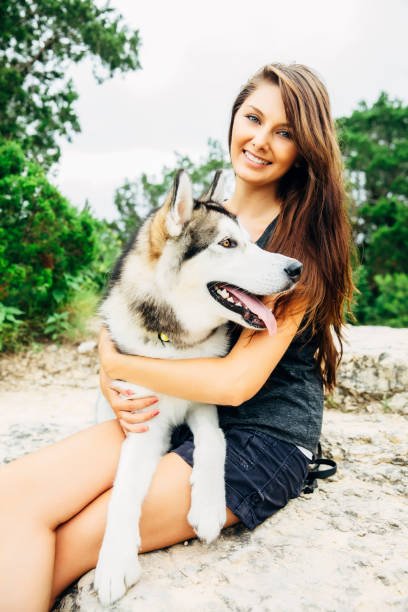
Testimonial 1: Sarah’s Story
“I adopted Max, my Alaskan Malamute, when he was just a puppy. From day one, his playful and loving nature stole my heart. Max is a fantastic hiking buddy, and we’ve explored many trails together. However, I quickly realized the importance of daily exercise. On days when we couldn’t get out due to bad weather, he’d become restless and sometimes even chewed on furniture. Regular exercise is a must for this breed, and it’s a commitment I’m happy to make because Max brings so much joy into my life.”
Testimonial 2: John’s Experience
“As a Malamute owner for over a decade, I can’t imagine my life without them. These dogs are incredibly loyal and protective. My Malamutes have always been great with my kids, and I love that they’re watchful guardians of our home. On the downside, be ready for the shedding! I’ve invested in quality grooming tools, but it’s still a constant battle against the fur. Overall, the pros far outweigh the cons for me.”
Testimonial 3: Emily’s Take
“I fell in love with Malamutes after seeing one at a local dog park. I adopted Luna, and she’s been my constant companion ever since. Luna has such a unique personality, and I appreciate her independence. However, training wasn’t always smooth sailing. Malamutes can be headstrong, and it took time to establish our routine. But with patience and consistency, she’s become an obedient and loving dog.”
These personal stories and testimonials from Alaskan Malamute owners offer a glimpse into the real-life experiences of living with this remarkable breed. While they come with their share of challenges, the love, loyalty, and adventure that Malamutes bring to their owners’ lives make them a cherished part of many families.
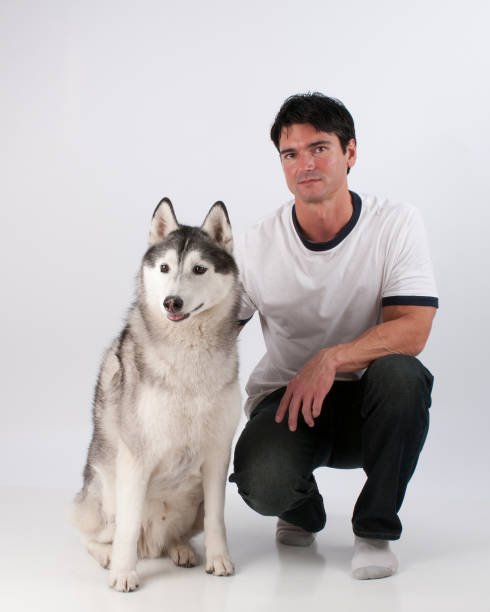
11. Breed-Specific Accessories and Care Products for Alaskan Malamutes
Taking care of an Alaskan Malamute requires more than just love and attention; it also involves having the right tools and accessories to meet their specific needs. In this section, we’ll recommend a range of accessories and care products tailored to the Alaskan Malamute breed, from grooming tools to harnesses and toys, to help you ensure the well-being and happiness of your furry friend.
Grooming Tools
Alaskan Malamutes have a thick double coat that requires regular grooming to keep it healthy and to minimize shedding. Here are some grooming tools that are essential for Malamute owners:
1. Slicker Brush: A slicker brush with fine wire bristles helps remove loose fur, tangles, and mats from your Malamute’s coat. Regular brushing can prevent excessive shedding.
2. Undercoat Rake: Malamutes have a dense undercoat, and an undercoat rake is excellent for getting through this thick fur layer, especially during shedding seasons.
3. Shedding Blade: A shedding blade is designed to remove loose fur from your dog’s coat. It’s effective at reducing shedding and keeping your home cleaner.
4. Deshedding Tool: A deshedding tool, such as the Furminator, can be highly effective at removing loose undercoat hair and reducing shedding.
5. Grooming Scissors: Having a pair of quality grooming scissors can be handy for trimming around your Malamute’s paws and ears.
6. Nail Clippers: Regular nail trimming is essential to keep your Malamute’s nails at a safe length. Choose nail clippers that are suitable for large dog breeds.
7. Ear Cleaner: Malamutes are prone to ear infections due to their furry ears. Use a dog-specific ear cleaner and cotton balls to keep their ears clean.
8. Dog Shampoo and Conditioner: Invest in a high-quality dog shampoo and conditioner to keep your Malamute’s coat clean and healthy. Look for a formula suited to their skin type.
Harnesses and Collars
Choosing the right harness or collar for your Alaskan Malamute is essential for their safety and comfort during walks and outdoor activities:
1. No-Pull Harness: Due to their strength, Alaskan Malamutes can be prone to pulling on the leash. A no-pull harness with front attachment points helps reduce pulling and provides better control.
2. Back-Clip Harness: A back-clip harness is a comfortable option for daily walks and activities. It distributes the leash pressure evenly across your dog’s chest and back.
3. Martingale Collar: If you prefer using a collar, consider a martingale collar. It offers more control and prevents your Malamute from slipping out of it.
4. ID Tags: Always have identification tags with your contact information on your Malamute’s collar or harness. This is crucial in case your dog ever gets lost.
5. GPS Tracker: For added peace of mind, consider a GPS tracker device that attaches to your Malamute’s collar. It allows you to track their location in real-time.
Toys and Entertainment
Malamutes are playful and active dogs that need mental stimulation and entertainment. Here are some toys and products to keep them engaged:
1. Interactive Toys: Toys that dispense treats or have hidden compartments for treats can provide mental stimulation and keep your Malamute busy.
2. Chew Toys: Durable chew toys are essential for Malamutes, especially puppies who are teething. Look for toys designed for powerful chewers.
3. Puzzle Toys: Puzzle toys challenge your dog’s problem-solving skills and provide hours of entertainment. These toys can be particularly helpful during indoor play.
4. Kong Toys: Kong toys are known for their durability and versatility. You can stuff them with treats or peanut butter to keep your Malamute engaged.
5. Tug Toys: Tug-of-war is a favorite game for many Malamutes. Invest in sturdy tug toys for interactive play.
6. Outdoor Play Equipment: If you have outdoor space, consider adding agility equipment like tunnels or jumps for your Malamute to enjoy.
7. Frozen Treats: In hot weather, frozen treats like ice cubes with a piece of fruit inside or frozen yogurt can provide a refreshing and tasty snack.
Cold Weather Gear
Alaskan Malamutes are well-suited to cold climates, but they still require protection from extreme cold and snow. Here are some essential cold weather accessories:
1. Winter Coat: Consider a winter coat or jacket for your Malamute to keep them warm during frigid temperatures and winter walks.
2. Dog Boots: Protect your Malamute’s paws from cold surfaces and snow by investing in a pair of dog boots. They also help prevent salt and ice from getting lodged between their toes.
3. Doggie Scarf or Snood: A doggie scarf or snood can cover your Malamute’s neck and ears, providing extra warmth and insulation in cold weather.
4. Paw Balm: Use paw balm to moisturize and protect your dog’s paw pads from cracking in dry and cold conditions.
5. Reflective Gear: If you’re walking your Malamute in low-light conditions during the winter, consider reflective gear to enhance visibility and safety.
These breed-specific accessories and care products are essential for maintaining the health, comfort, and happiness of your Alaskan Malamute. Whether it’s grooming tools to keep their coat in top shape, a no-pull harness for walks, or engaging toys to satisfy their active nature, these items will contribute to a fulfilling and enjoyable life for your Malamute companion.
12. Frequently Asked Questions (FAQs) About the Alaskan Malamute Breed
As we’ve explored the world of Alaskan Malamutes in detail, you might still have some lingering questions about this remarkable breed. In this section, we’ll address ten common questions that frequently arise regarding Alaskan Malamutes. These questions cover a range of topics not covered in the main sections, providing you with a comprehensive understanding of this breed.
1. Are Alaskan Malamutes Good Family Dogs?
Yes, Alaskan Malamutes can be excellent family dogs. They are known for their loyalty, affection, and patience with children. However, early socialization and consistent training are crucial to ensure they interact well with family members of all ages.
2. Do Alaskan Malamutes Get Along with Other Pets?
Alaskan Malamutes can coexist with other pets, including cats and other dogs, especially when they are raised together from a young age. However, their strong prey drive means they may have a tendency to chase smaller animals, so supervision is essential.
3. How Much Exercise Do Alaskan Malamutes Need?
Malamutes are highly active dogs and require a significant amount of exercise. Daily walks, playtime, and opportunities for outdoor activities are essential to keep them physically and mentally stimulated. Plan for at least 60-90 minutes of exercise each day.
4. Are Alaskan Malamutes Aggressive?
Alaskan Malamutes are generally not aggressive by nature. However, they can become protective if they sense a threat to their family. Proper socialization and early training can help prevent aggressive behavior.
5. What Is the Lifespan of an Alaskan Malamute?
The average lifespan of an Alaskan Malamute is around 10 to 14 years. Providing them with a balanced diet, regular exercise, and routine veterinary care can contribute to a longer, healthier life.
6. How Often Should I Groom My Alaskan Malamute?
Regular grooming is essential for Malamutes, especially during shedding seasons. Brush their coat at least 2-3 times a week to remove loose fur and prevent matting. During heavy shedding periods, daily brushing may be necessary.
7. Can Alaskan Malamutes Handle Hot Weather?
Alaskan Malamutes are cold-weather dogs and can struggle in hot weather. They are prone to overheating, so it’s crucial to provide them with plenty of shade, fresh water, and avoid strenuous exercise during hot days.
8. Do Alaskan Malamutes Bark a Lot?
Malamutes are not known for excessive barking like some other breeds. However, they are known for howling and “talking.” Their vocalizations can be quite expressive, but it’s not constant or bothersome barking.
9. Are Alaskan Malamutes Prone to Health Issues?
While Malamutes are generally healthy dogs, they can be prone to certain health issues, including hip dysplasia, cataracts, and bloat. Regular veterinary check-ups and a healthy lifestyle can help mitigate these risks.
10. Are Alaskan Malamutes Suitable for First-Time Dog Owners?
Alaskan Malamutes can be a challenge for first-time dog owners due to their size, energy level, and independent nature. However, with dedication to training, socialization, and a commitment to meeting their exercise and grooming needs, first-time owners can successfully raise a happy and healthy Malamute.
These frequently asked questions and their answers provide valuable insights into the world of Alaskan Malamutes. By understanding their needs, behavior, and characteristics, you can provide the best possible care and companionship for this incredible breed.
13. Conclusion: Caring for Alaskan Malamutes
In this comprehensive guide, we’ve embarked on a journey to discover the world of Alaskan Malamutes, a magnificent breed known for its strength, beauty, and loyalty. As we conclude this article, let’s summarize the key points we’ve covered and highlight the importance of responsible ownership and adoption.
Recap of Key Points
Throughout this article, we’ve delved into various aspects of Alaskan Malamutes, providing you with a wealth of information:
1. Introduction: We started by introducing you to the Alaskan Malamute breed, highlighting their unique characteristics and the need for a detailed and up-to-date source of information.
2. Breed History and Origin: We explored the historical development of Alaskan Malamutes, noting their notable traits and how their origin has influenced their characteristics today.
3. Understanding the Alaskan Malamute Breed’s Traits: We discussed their physical characteristics, temperament, and environmental needs, emphasizing the importance of training and socialization.
4. Health Considerations and Care: We addressed common health issues, lifespan, diet, exercise, grooming, and other aspects of caring for your Malamute.
5. Choosing and Adopting an Alaskan Malamute Dog Breed: We highlighted the benefits of adoption, provided tips on research and preparation, and explained the adoption process and ethical considerations.
6. Popularity and Recognition: We covered the breed’s current popularity, recognition by kennel clubs, and distinct varieties or subtypes.
7. Exercise and Activity Recommendations: We provided a detailed exercise plan and nutrition guidelines to keep your Malamute healthy and active.
8. Socialization and Training Tips: We offered breed-specific training tips and advice on socializing your Malamute with other dogs and people.
9. Common Behavioral Traits: We discussed common behavioral traits, both positive and challenging, and offered advice on managing and addressing behavior issues.
10. Personal Stories and Testimonials: We shared personal stories and testimonials from Alaskan Malamute owners, shedding light on the joys and challenges of owning this breed and the associated costs.
11. Breed-Specific Accessories and Care Products: We recommended essential grooming tools, harnesses, collars, toys, and cold weather gear to meet your Malamute’s unique needs.
12. Frequently Asked Questions (FAQs): We answered common questions about Alaskan Malamutes, addressing various topics not covered in the main sections.
Now, let’s emphasize the crucial aspects of responsible ownership and the benefits of adoption.
Responsible Ownership
Owning an Alaskan Malamute is a rewarding experience, but it comes with significant responsibilities. Here’s how you can be a responsible Malamute owner:
1. Commitment: Understand that owning a Malamute is a long-term commitment that can span over a decade. Be prepared to invest time, effort, and resources into their care.
2. Training and Socialization: Invest in proper training and socialization from an early age to ensure a well-behaved and well-adjusted dog.
3. Exercise and Activity: Fulfill their exercise needs and provide mental stimulation to prevent boredom-related behavior issues.
4. Grooming: Regular grooming is essential for their health and comfort. Brush their coat, clean their ears, and maintain good hygiene.
5. Health Care: Schedule regular vet check-ups, vaccinations, and preventive care. Address any health issues promptly.
6. Responsible Breeding: If you choose to breed Malamutes, do so responsibly, following ethical breeding practices and prioritizing the health and well-being of the dogs.
Encourage Adoption
While breeders provide an option for obtaining an Alaskan Malamute, adoption is an incredibly noble choice. There are many Malamutes in rescue organizations and shelters waiting for their forever homes. By adopting, you give these dogs a second chance at a happy life. Here are some resources for exploring adoption:
1. Rescue Organizations: Research Alaskan Malamute rescue organizations in your area or nationally. These organizations specialize in rescuing and rehoming Malamutes.
2. Shelters and Animal Control: Visit local animal shelters and animal control facilities. Sometimes, Malamutes end up in these places and need loving homes.
3. Online Adoption Platforms: Websites like Petfinder and Adopt-a-Pet can connect you with Malamutes available for adoption in your region.
4. Breed-Specific Forums: Join online forums and communities dedicated to Alaskan Malamutes. Members often share adoption opportunities and resources.
5. Foster Programs: Consider fostering a Malamute through a rescue organization. Fostering allows you to provide temporary care and love while the dog waits for a permanent home.
In conclusion, Alaskan Malamutes are remarkable dogs that bring joy and companionship to their owners. Whether you’re a seasoned dog owner or considering your first furry friend, the information in this guide equips you with the knowledge to provide excellent care for this breed. Remember that responsible ownership is key, and adoption is a compassionate choice that can change both your life and the life of an Alaskan Malamute in need. Thank you for exploring the world of Alaskan Malamutes with us, and we hope you embark on a wonderful journey with your Malamute companion.

Dr. Rachel Davis is a passionate veterinarian, having completed her studies in veterinary medicine at the University of California. Alongside her professional commitments, she remains dedicated to her beloved dog and has a profound love for all animals. In her spare time, she indulges in her passion for writing, often focusing on topics related to veterinary care and animal welfare.




